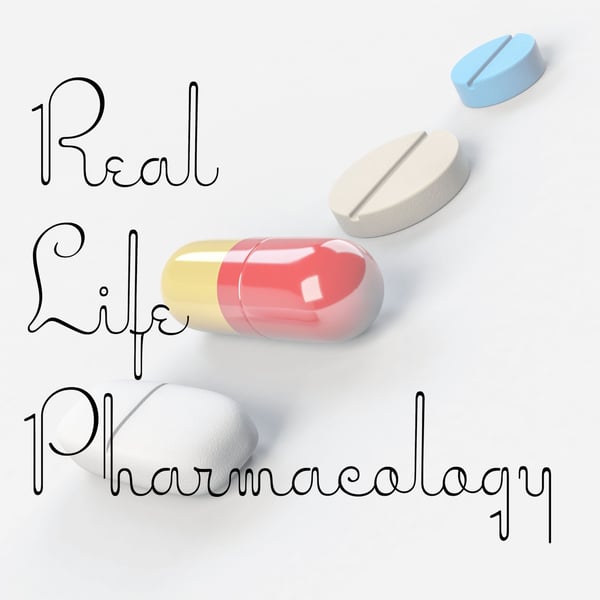Fexofenadine Pharmacology
Real Life Pharmacology - Pharmacology Education for Health Care Professionals
Eric Christianson, PharmD; Pharmacology Expert and Clinical Pharmacist
5 • 716 Ratings
🗓️ 1 April 2021
⏱️ 14 minutes
🧾️ Download transcript
Summary
Fruit juices can actually impair the absorption of fexofenadine and increase the risk of treatment failure.
Fexofenadine is mildly anticholinergic but overall has low to no CNS penetration.
Because fexofenadine has low CNS penetration, the risk for sedation and dizziness is much lower than older antihistamines like diphenhydramine.
Transcript
Click on a timestamp to play from that location
| 0:00.0 | Hey all, welcome back to the Real Life Pharmacology podcast. I'm your host, pharmacist, Eric Christensen. |
| 0:05.6 | Thanks so much for listening today. As always, go check out Real Life Pharmacology.com. |
| 0:11.8 | Snag your free PDF on the top 200 drugs. |
| 0:15.9 | 31 pages, lots of clinical practice pearls in there, as well as things that may show up on various |
| 0:24.1 | board exams throughout your health care career as well. So again, absolutely free for following |
| 0:30.3 | the podcast. We send you out email updates when we've got new podcasts available as well as other |
| 0:36.9 | content too. |
| 0:38.9 | All right, so let's get into the drug of the day today, and that is fexophenidine. |
| 0:45.3 | Brand name of this medication is Allegra. |
| 0:48.5 | It is classified as a second-generation antihistamine. |
| 0:58.2 | So if you recall what first- generation antihistamines are, |
| 1:04.7 | the most common example there would be diphenhydramine. Certainly it can be very, very useful in allergic rhinitis, and that is primarily what I see this medication used for. |
| 1:14.6 | So whenever you have a next generation medication within a general class, |
| 1:22.5 | generally that represents some sort of improvement over previous classes. And with the second generation |
| 1:31.2 | antihistamines like fexofenidine like we have here, the primary advantage of this medication |
| 1:39.1 | over the diphenhydramine or hydroxazine type agents is that there's less sedation with this medication. |
| 1:50.8 | Mechanistically, it binds, it's an anihistamine, so it binds in blocks histamine type 1 receptors. |
| 1:59.3 | This is done in the vessels and respiratory tract, which makes sense why we're |
| 2:04.7 | using it for allergic granitis, that type of thing. But it is important to remember the difference |
| 2:11.3 | between H1 and H2. So H2 blockers are used in acid secretion disorders, basically. |
| 2:21.2 | So things like GERD and heartburn and stuff like that versus antihistamine type 1 blocking agents. |
| 2:28.8 | They're used more so in response to allergies and things of that nature. |
... |
Please login to see the full transcript.
Disclaimer: The podcast and artwork embedded on this page are from Eric Christianson, PharmD; Pharmacology Expert and Clinical Pharmacist, and are the property of its owner and not affiliated with or endorsed by Tapesearch.
Generated transcripts are the property of Eric Christianson, PharmD; Pharmacology Expert and Clinical Pharmacist and are distributed freely under the Fair Use doctrine. Transcripts generated by Tapesearch are not guaranteed to be accurate.
Copyright © Tapesearch 2025.

